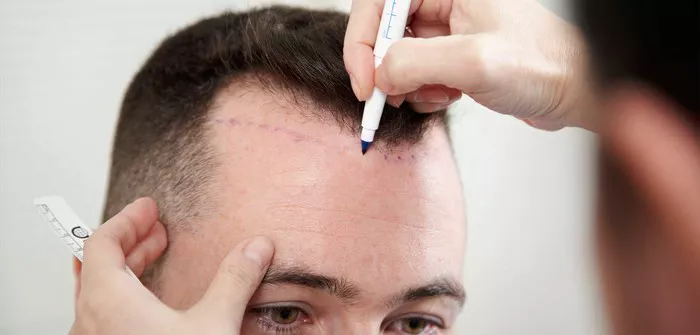Hair loss can be a distressing experience for many individuals, impacting not only their physical appearance but also their self-esteem and confidence. With advancements in medical technology, hair implants have emerged as a popular solution for those seeking to restore a fuller head of hair. However, one significant consideration for anyone contemplating hair implants is the cost involved. In this article, we will delve into the factors influencing the expense of hair implants, the various types of procedures available, and considerations for those contemplating this investment in their appearance.
Understanding Hair Implants
Hair implants, also known as hair transplant surgery, involve the transplantation of hair follicles from one part of the body (typically the back or sides of the scalp) to areas experiencing hair loss or thinning. This procedure is considered a long-term solution to hair loss, as the transplanted hair follicles continue to grow naturally in their new location.
Factors Influencing Cost
Several factors contribute to the overall cost of hair implant procedures:
1. Type of Procedure: There are different techniques for hair implantation, including Follicular Unit Transplantation (FUT) and Follicular Unit Extraction (FUE). FUT involves the removal of a strip of scalp from the donor area, while FUE involves the extraction of individual hair follicles. FUE is typically more labor-intensive and may be more expensive than FUT due to the precision and time required for extraction.
2. Extent of Hair Loss: The amount of hair loss and the area requiring treatment significantly impact the cost of hair implants. Individuals with extensive balding or thinning may require multiple sessions or larger quantities of hair follicles, resulting in higher costs.
3. Qualifications and Experience of the Surgeon: The expertise and reputation of the surgeon performing the procedure play a crucial role in determining the cost. Highly skilled and experienced surgeons may charge more for their services, reflecting their expertise and track record of successful outcomes.
4. Location of the Clinic: The geographical location of the clinic can influence the cost of hair implant procedures. Clinics located in metropolitan areas or regions with a higher cost of living may have higher overhead expenses, leading to increased procedure costs.
5. Additional Services and Facilities: Some clinics may offer additional services such as pre-operative consultations, post-operative care, and advanced technologies (such as robotic-assisted hair transplantation), which can contribute to higher overall costs.
Average Cost of Hair Implants
While the cost of hair implants can vary widely depending on the factors mentioned above, it is essential to provide a general overview of the average expenses associated with these procedures:
1. Follicular Unit Transplantation (FUT): On average, FUT procedures can range from $4,000 to $15,000 per session. The cost may vary based on the number of grafts required and the complexity of the procedure.
2. Follicular Unit Extraction (FUE): FUE procedures tend to be more expensive, with average costs ranging from $5,000 to $25,000 per session. Again, the total cost depends on the number of grafts needed and the surgeon’s fees.
3. Additional Costs: In addition to the procedure itself, patients should factor in other expenses such as pre-operative consultations, post-operative medications, and follow-up appointments. These costs can vary depending on the clinic and individual patient needs.
Cost Considerations and Financing Options
Given the significant investment involved in hair implant procedures, it is crucial for individuals to carefully consider their budget and financing options:
1. Research and Compare: Patients should research multiple clinics and surgeons to compare costs, qualifications, and patient reviews. While cost is an important factor, it should not be the sole determinant in choosing a surgeon. The surgeon’s experience and track record of successful outcomes are equally important considerations.
2. Insurance Coverage: In most cases, hair implant procedures are considered elective cosmetic surgeries and are not covered by insurance. However, some insurance plans may provide coverage for hair restoration procedures if they are deemed medically necessary due to conditions such as alopecia or scarring.
3. Financing Options: Many clinics offer financing plans or payment options to help patients manage the cost of hair implant procedures. Patients can explore options such as medical loans, credit card payments, or payment plans offered by the clinic to spread out the cost over time.
4. Long-Term Investment: While the upfront cost of hair implants may seem significant, it is essential to consider the long-term benefits and improved quality of life that result from a restored head of hair. For many individuals, the boost in confidence and self-esteem outweighs the initial financial investment.
Conclusion
Hair implant procedures offer a permanent solution to hair loss and thinning, providing individuals with a natural-looking and fuller head of hair. However, the cost of these procedures can vary depending on factors such as the type of procedure, extent of hair loss, surgeon’s expertise, and clinic location. Patients should carefully consider their budget and financing options before undergoing hair implant surgery, ensuring they choose a qualified surgeon who can deliver optimal results. While the cost may be a significant investment, the long-term benefits of improved confidence and self-image are invaluable to many individuals seeking to restore their hair and enhance their appearance.


